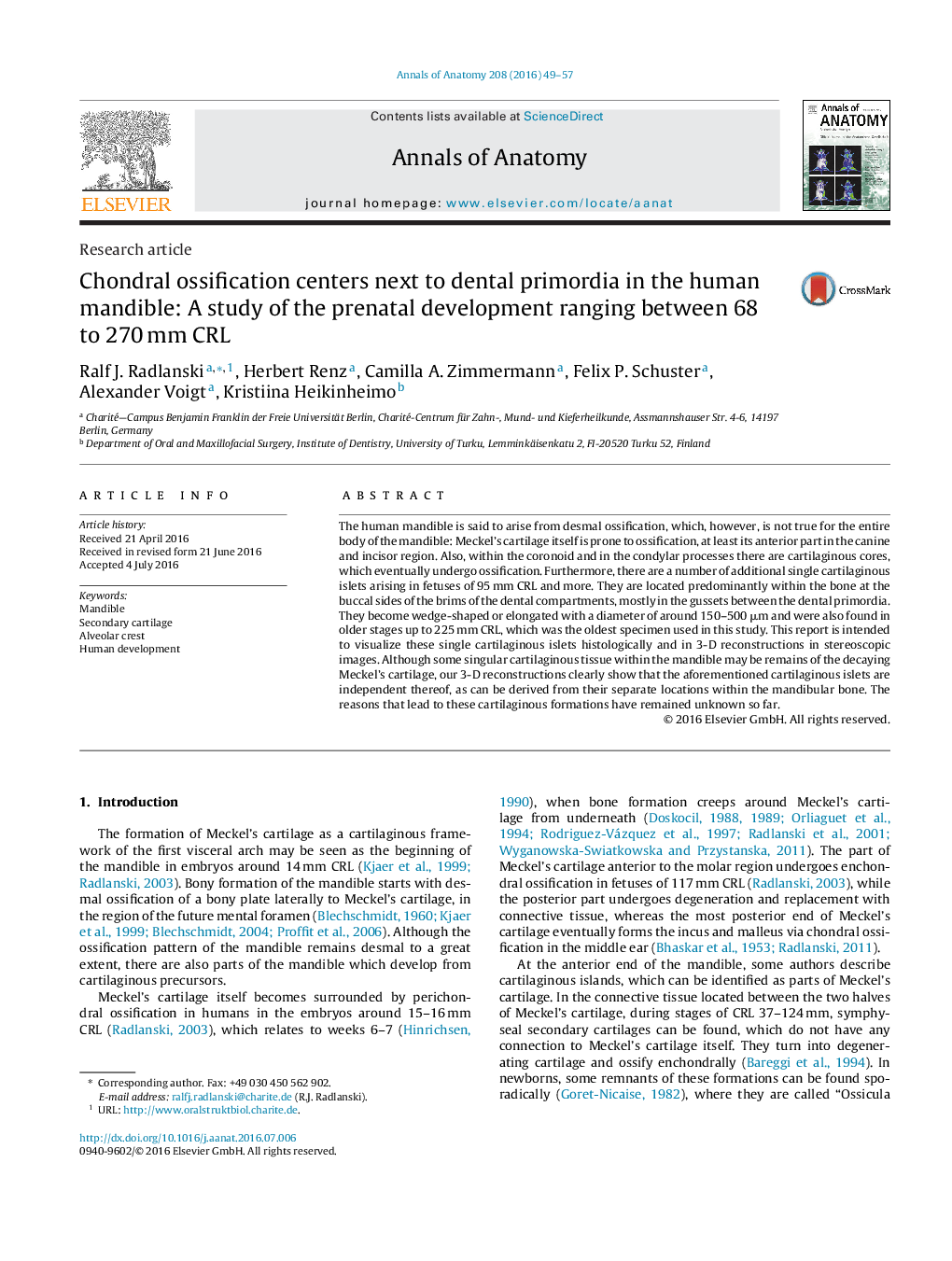| Article ID | Journal | Published Year | Pages | File Type |
|---|---|---|---|---|
| 2164341 | Annals of Anatomy - Anatomischer Anzeiger | 2016 | 9 Pages |
Abstract
The human mandible is said to arise from desmal ossification, which, however, is not true for the entire body of the mandible: Meckel's cartilage itself is prone to ossification, at least its anterior part in the canine and incisor region. Also, within the coronoid and in the condylar processes there are cartilaginous cores, which eventually undergo ossification. Furthermore, there are a number of additional single cartilaginous islets arising in fetuses of 95 mm CRL and more. They are located predominantly within the bone at the buccal sides of the brims of the dental compartments, mostly in the gussets between the dental primordia. They become wedge-shaped or elongated with a diameter of around 150-500 μm and were also found in older stages up to 225 mm CRL, which was the oldest specimen used in this study. This report is intended to visualize these single cartilaginous islets histologically and in 3-D reconstructions in stereoscopic images. Although some singular cartilaginous tissue within the mandible may be remains of the decaying Meckel's cartilage, our 3-D reconstructions clearly show that the aforementioned cartilaginous islets are independent thereof, as can be derived from their separate locations within the mandibular bone. The reasons that lead to these cartilaginous formations have remained unknown so far.
Related Topics
Life Sciences
Biochemistry, Genetics and Molecular Biology
Cell Biology
Authors
Ralf J. Radlanski, Herbert Renz, Camilla A. Zimmermann, Felix P. Schuster, Alexander Voigt, Kristiina Heikinheimo,
